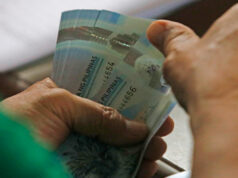Coco industry gears for big jump
DAVAO CITY — As coconut products such as oil and coco water ride on a wave of global popularity, Philippine farmers and processors are looking to expand production and improve yields for the country’s top agricultural export.
Stakeholders are currently gathered in Davao City for the three-day CocoLink: 2nd International Coconut Conference and Trade Expo, where discussions focus on the need to plant more trees and increase production volume.
“That (production and productivity) is something all the processors in the industry are very concerned about. These are processors working in different aspects of coconut products,” Thelonious S. Trimell, chief of party of the Mindanao Productivity in Agricultural Commerce and Trade (MinPACT) Project, said during the conference opening on Nov. 7.
MinPACT, funded by the US Department of Agriculture and implemented by nonprofit organization ACDI/VOCA, implements programs that support coconut, coffee, and cocoa farmers in Mindanao.
Mr. Trimell said the Philippines is well positioned to benefit from the growing demand for coconut products in the international market if stakeholders work as a unified sector towards sustainability.
“You all need coconut and you all need to work together to ensure there’s coconut in the Philippines and in the future,” he said.
The combined export value of three products — oil, copra oil cake/meal, and desiccated coconut — was P59 billion in 2016, up from P55 billion in 2015, according to the Philippine Statistics Authority (PSA). Last year’s total was still lower than the P63 billion recorded in 2014, before production was affected by adverse growing conditions, particularly the dry spell from El Niño.
In the three months to June 2017, production improved to 3.21 million metric tons (MT) from 3.18 million MT a year earlier. The PSA said the increase was due to more intensive harvesting activity in the Zamboanga Peninsula and Western Visayas due to higher market prices and demand, and improved yields in Palawan following a recovery from the dry spell last year.
Zamboanga Peninsula and the Davao Region were the top coconut-producing regions for the quarter, accounting for 13.4% and 14.5% of the total, respectively.
Migdonio C. Clamor, Jr., executive director of the nongovernment Davao Region Coconut Industry Cluster, Inc., which organizes CocoLink, said with participants from at least 10 countries in the event, the organization is aiming to connect more buyers to the farmers and processors.
“We hope (foreign participants) will be happy to look into the products of our farmers and producers,” Mr. Clamor said. — Maya M. Padillo



